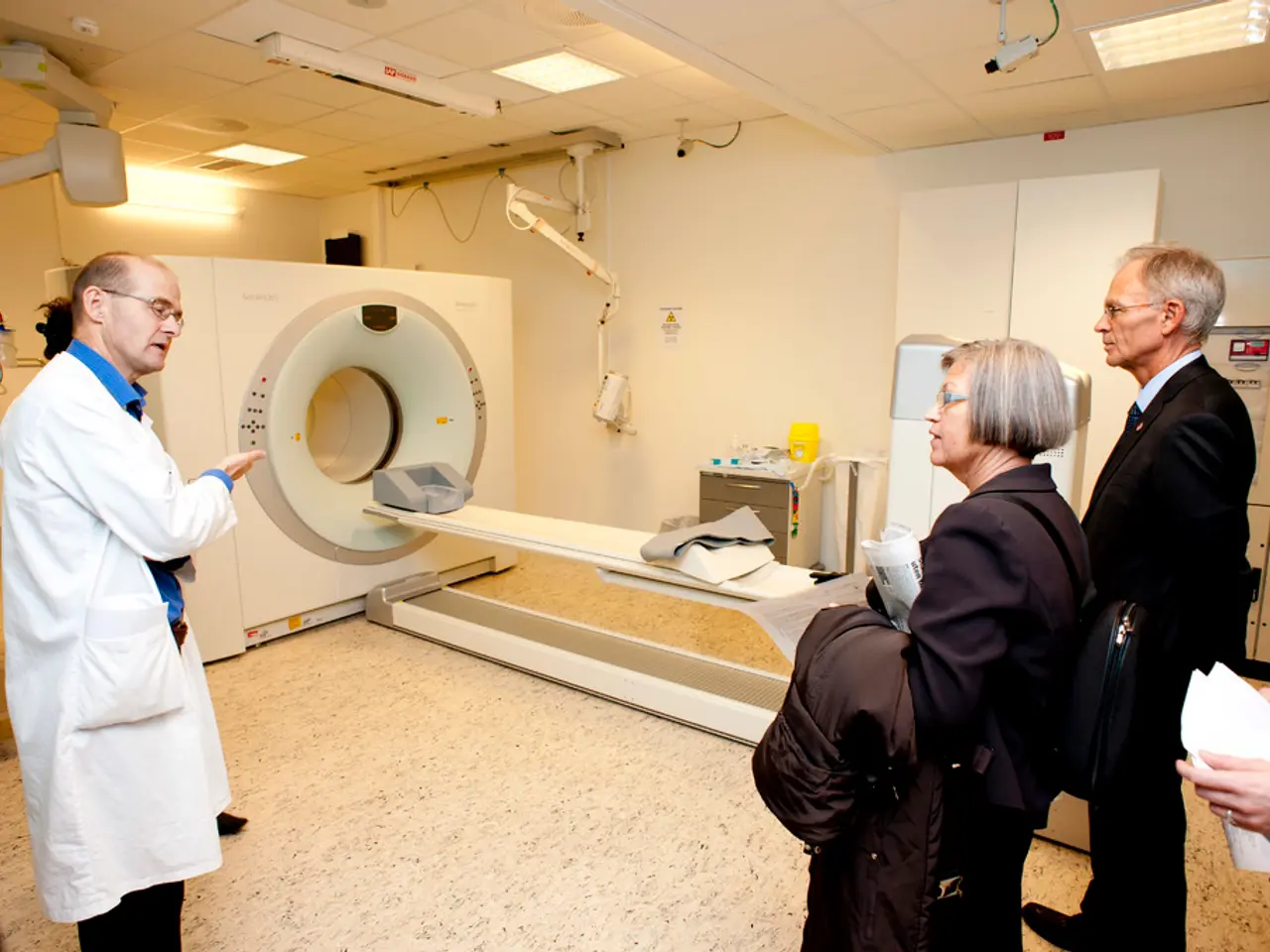Top Headlines: A Collection of Informative Briefs from the Data News Sphere
In Healthcare
Artificial Intelligence (AI) is making significant strides in the healthcare sector, improving diagnostic accuracy, automating administrative tasks, and enhancing treatment personalization.
One of the most promising developments is the use of AI as a second reader in breast cancer screening. AI models have shown an 8.4% sensitivity increase over traditional human double-reading, helping to detect more invasive and larger tumors that might otherwise be missed by radiologists [1]. This early detection is crucial in addressing staff shortages in screening programs.
AI is also being used to automate medical documentation. For instance, the NHS in London is piloting AI tools that extract relevant information from patient records to draft discharge summaries, reducing paperwork for clinicians and speeding up patient discharge processes [1].
In addition, AI is being used to analyze vast clinical data, enabling early disease detection and personalized treatment. Google's AI, for example, has surpassed human accuracy in mammogram interpretation, reducing false positives and negatives [2].
AI is also playing a crucial role in drug discovery and biological research. Models like Cambridge's outperform clinical tests for Alzheimer's progression prediction, while others can predict genetic mutation effects on biological processes, aiding personalized medicine development [4].
It's important to note that AI is seen as an aid to clinicians, not a replacement. AI assists in clinical decision-making, documentation, scheduling, patient outreach, drug discovery, and public health monitoring, but must be integrated responsibly with human expertise to ensure safety and efficacy [3].
AI-powered telemedicine platforms are also improving access to doctors in remote areas and reducing administrative burdens across hospitals, helping healthcare systems cope with workforce shortages [2][5].
In Criminal Justice
While recent detailed advancements in AI applications for criminal justice systems are less highlighted, ongoing trends indicate that AI continues to be applied for case data analysis, predictive policing, risk assessment for sentencing, and legal document automation. There is growing emphasis on fairness and bias mitigation in these applications [6].
For instance, Code for America, a U.S.-based nonprofit organization, has developed an AI system that can identify and expunge eligible criminal records from state databases. Utah officials have begun expunging 500,000 eligible cases using this AI system [6].
Outside the Sphere of Healthcare and Criminal Justice
In the realm of beauty technology, Sally Hansen, a U.S.-based nail polish brand, and Perfect Corporation, a beauty technology company in Taiwan, have partnered to launch a virtual try-on tool for nail polish.
Meanwhile, Snapchat has launched a new augmented reality lens that can detect Cheetos or Doritos chips and automatically play Megan Thee Stallion's single Flamin' Hottie.
[1] NHS Digital. (2020). AI in Health and Care Award Winners 2020. Retrieved from [https://www.nhsx.nhs.uk/ai-health-and-care-award-winners-2020/]
[2] MIT News. (2020). AI can detect breast cancer earlier and more accurately than radiologists. Retrieved from [https://news.mit.edu/2020/ai-can-detect-breast-cancer-earlier-and-more-accurately-than-radiologists-0531]
[3] The Lancet Digital Health. (2020). Artificial intelligence in healthcare: the promise, the potential, and the pitfalls. Retrieved from [https://www.thelancet.com/journals/landig/article/PIIS2589-7500(20)30094-1/fulltext]
[4] Nature. (2020). Artificial intelligence in drug discovery. Retrieved from [https://www.nature.com/articles/d41586-020-00712-y]
[5] Healthcare IT News. (2020). AI-powered telemedicine platforms see growth amid COVID-19 pandemic. Retrieved from [https://www.healthcareitnews.com/news/ai-powered-telemedicine-platforms-see-growth-amid-covid-19-pandemic]
[6] Code for America. (2021). Code for America's Clear My Record. Retrieved from [https://www.codeforamerica.org/projects/clear-my-record/]
- In the healthcare sector, machine learning and analytics in AI are contributing to improved diagnostic accuracy, automating administrative tasks, and enhancing personalized treatments for medical-conditions such as cancer.
- AI is increasingly being used to analyze data in environmental science, climate-change research, health-and-wellness, and even space-and-astronomy to better understand complex processes andmake predictions.
- The use of AI in drug discovery and biological research is gaining ground, with models like Cambridge's already outperforming clinical tests for Alzheimer's progression prediction and aiding in personalized medicine development.
- AI is also playing a vital role in the detection and treatment of diseases, with Google's AI having surpassed human accuracy in mammogram interpretation, leading to a reduction in false positives and negatives.
- AI is seen as a valuable tool for clinicians, assisting in clinical decision-making, documentation, scheduling, patient outreach, drug discovery, and public health monitoring but must be integrated responsibly with human expertise to ensure safety and efficacy.
- AI-powered telemedicine platforms are helping to improve access to healthcare services for those living in remote areas and reducing administrative burdens across hospitals.
- In the criminal justice system, AI continues to be applied for case data analysis, predictive policing, risk assessment for sentencing, and legal document automation, with an increased emphasis on fairness and bias mitigation.
- Outside the realm of healthcare and criminal justice, AI technology is being used in various industries, such as beauty technology, where it's being used to create virtual try-on tools for products like nail polish, and augmented reality applications that bring advertising to a new level.




